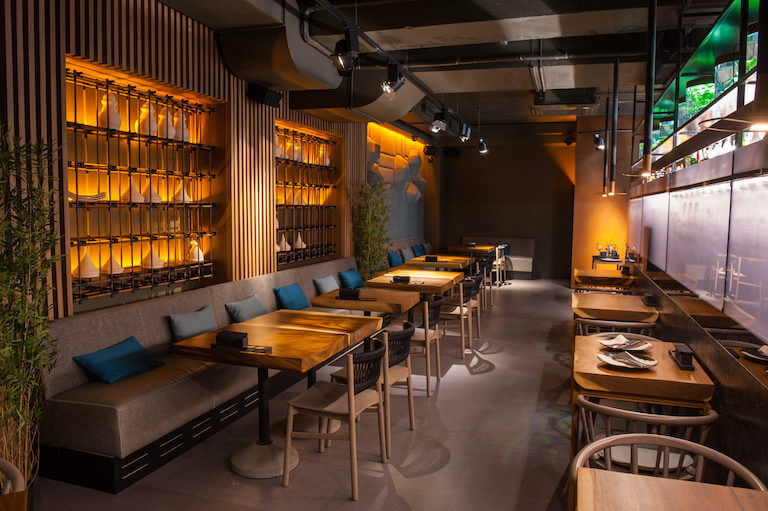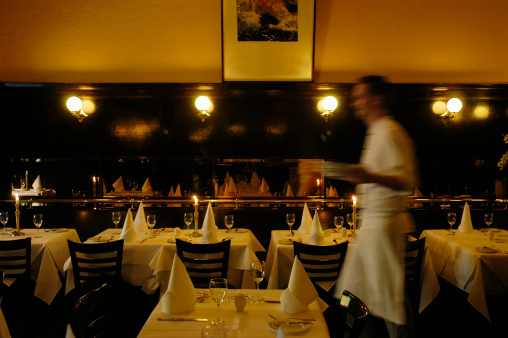Best Ambiance Restaurants Islamabad: Perfect Destinations for an Unforgettable Dish
Best Ambiance Restaurants Islamabad: Perfect Destinations for an Unforgettable Dish
Blog Article
Savor Authentic Eastern Food With a Pan-Asian Spin for a Culinary Adventure
Starting a cooking trip through authentic Asian cuisine, improved with a Pan-Asian twist, supplies an unique chance to explore the abundant tapestry of tastes that define the region's varied cooking practices. This experience invites you to savor the charming balance of preferences-- sweet, salty, spicy, and sour-- harmonized by fragrant natural herbs and seasonings. Picture the ingenious fusion of Thai curry and ramen or the unexpected delight of sushi burritos. As you ponder these enticing meals, take into consideration the social stories and historical impacts that shape them, each bite providing a story waiting to be discovered.

Discovering Pan-Asian Flavors
In the realm of global gastronomy, Pan-Asian food attracts attention for its impressive diversity and the harmonious interplay of tastes from different Asian societies. This cooking method commemorates the abundant traditions and one-of-a-kind active ingredients found throughout the continent, creating a tapestry of tastes that is both gratifying and interesting. Secret to Pan-Asian cuisine is its capacity to balance contrasting flavors-- pleasant, salty, spicy, and sour-- while highlighting the freshness and top quality of each component.
From the umami-rich soy sauce of Japan to the fiery chili peppers of Thailand, Pan-Asian cuisine supplies a considerable palette of tastes. These components are usually integrated in creative ways, boosting recipes with layers of complexity. For circumstances, making use of fragrant herbs such as lemongrass and cilantro, usual in Vietnamese and Thai food, adds a revitalizing brightness to meals, while the unification of coconut milk delivers a luscious, rich texture.
The emphasis on fresh produce and aromatic spices makes sure that each dish is not just a feast for the taste yet also for the detects. Pan-Asian food invites diners to embark on a culinary trip, exploring the large and varied landscapes of Oriental gastronomy with every bite.
Blend Dishes to Try
While Pan-Asian food is commemorated for its typical flavors, the modern cooking landscape is significantly embracing fusion dishes that mix these classic elements with impacts from other areas. This innovative strategy not just honors the abundant heritage of Oriental cookeries however additionally presents unique preference experiences that interest contemporary tastes.
A prime example of such a fusion recipe is the Korean-Mexican taco, where marinaded bulgogi beef is wrapped in a cozy tortilla, topped with kimchi and a zesty gochujang-infused salsa. This combination weds the vibrant, savory flavors of Korea with the vibrant, fresh aspects of Mexican food. Likewise, sushi burritos have gained appeal, amalgamating the fragile creativity of Japanese sushi with the passionate, hand-held convenience of a burrito, usually including blend components like tempura shrimp and avocado with a drizzle of wasabi mayo.
An additional noteworthy recipe is Thai curry ramen, which infuses the luscious, aromatic flavors of Thai curry into the calming broth of standard Japanese ramen, developing a harmonious mix that tantalizes the senses. These blend recipes extend past mere uniqueness; they represent a culinary discussion in between societies, motivating expedition and innovation worldwide of Pan-Asian food.
Necessary Ingredients and Flavors
To absolutely value Pan-Asian cuisine, one have to understand the vital active ingredients and flavors that develop its structure. This varied cooking design attracts from an abundant tapestry of Oriental traditions, using a harmonious blend of textures and flavors. Key active ingredients consist of soy sauce, fish sauce, and oyster sauce, which pass on a tasty umami depth necessary to Eastern recipes. Complementary to these are rice vinegar and mirin, providing a delicate acidity and sweetness.
Fragrant aspects are essential, with garlic, lemongrass, and ginger being ubiquitous throughout different Pan-Asian dishes. These active ingredients supply an aromatic base that enhances the intricacy of tastes. Seasonings such as star anise, cardamom, and cinnamon introduce heat and personality, resembling impacts from regions like China and India.

Cooking Strategies and Tips
Mastering the art of Pan-Asian cuisine requires experience with its distinct cooking methods, each contributing to the dynamic tapestry of tastes this cooking practice is celebrated for. Central to these approaches is the stir-fry, a rapid cooking method that maintains the sakana dietary stability and vivid colors of active ingredients. Making use of a wok, the stir-fry method allows for even warm circulation, crucial for accomplishing the characteristic structure and taste equilibrium of Pan-Asian meals.
An additional basic strategy is steaming, particularly common in Chinese cuisine. This mild approach keeps the all-natural tastes and nutrients of active ingredients, making it perfect for seafood and vegetables. Dumplings, a cherished staple, typically take advantage of steaming, causing soft, succulent structures.
Cooking, likewise important, presents great smoky depths to meals such as Korean bulgogi or Japanese yakitori (best asian restaurant Islamabad). This strategy commonly includes seasoning components, allowing tastes to pass through deeply before cooking over an open flame or hot plate
Lastly, understanding the art of balancing flavors-- pleasant, sour, salted, bitter, and umami-- is vital. Appropriately layering these aspects can boost a meal from regular to extraordinary, supplying a complicated and pleasing culinary experience that symbolizes the significance of Pan-Asian food.
Dining Experiences Worldwide
Around the world, Pan-Asian food uses an unmatched eating experience, celebrated for its rich tapestry of tastes and dynamic presentations. This cooking phenomenon has transcended social limits, capturing the hearts and tastes buds of food fanatics worldwide. In worldwide cities like New York, London, and Sydney, Pan-Asian dining establishments work as fusions where culinary practices from Thailand, Japan, China, and browse around this web-site beyond merge, offering diners with an eclectic mix of recipes that highlight the region's diversity.
The worldwide appeal of Pan-Asian cuisine depends on its capability to offer both authenticity and advancement. Cooks masterfully wed standard active ingredients such as lemongrass, soy sauce, blog and miso with modern methods, causing recipes that are both refreshingly brand-new and familiar. This combination enables diners to begin on a culinary trip that values heritage while welcoming modernity.
Furthermore, dining experiences are elevated with attentively created settings that show the ethos of Pan-Asian aesthetics. From minimal Japanese-inspired insides to vivid Thai-themed rooms, each restaurant provides an unique ambiance that complements the cooking offerings. As a result, patrons are not merely consuming a dish yet partaking in a social experience, making Pan-Asian eating a genuinely worldwide phenomenon.
Conclusion
The exploration of Pan-Asian food supplies a profound understanding of the elaborate interplay of flavors and cooking practices throughout Asia. By accepting blend dishes such as Thai curry ramen and sushi burritos, the culinary trip not only highlights the versatility of traditional active ingredients yet likewise showcases innovative contemporary methods. This gastronomic experience, improved by cooking techniques and vital flavors, supplies a special opportunity to value the multiculturalism and culinary virtuosity that define Pan-Asian food on a worldwide scale.
Getting started on a culinary trip through genuine Oriental food, improved with a Pan-Asian spin, provides a distinct opportunity to discover the rich tapestry of tastes that define the area's diverse cooking practices.In the realm of international gastronomy, Pan-Asian cuisine stands out for its remarkable variety and the harmonious interplay of flavors from numerous Oriental societies. Key to Pan-Asian food is its capability to stabilize different flavors-- wonderful, salted, spicy, and sour-- while highlighting the quality and quality of each active ingredient.

Report this page